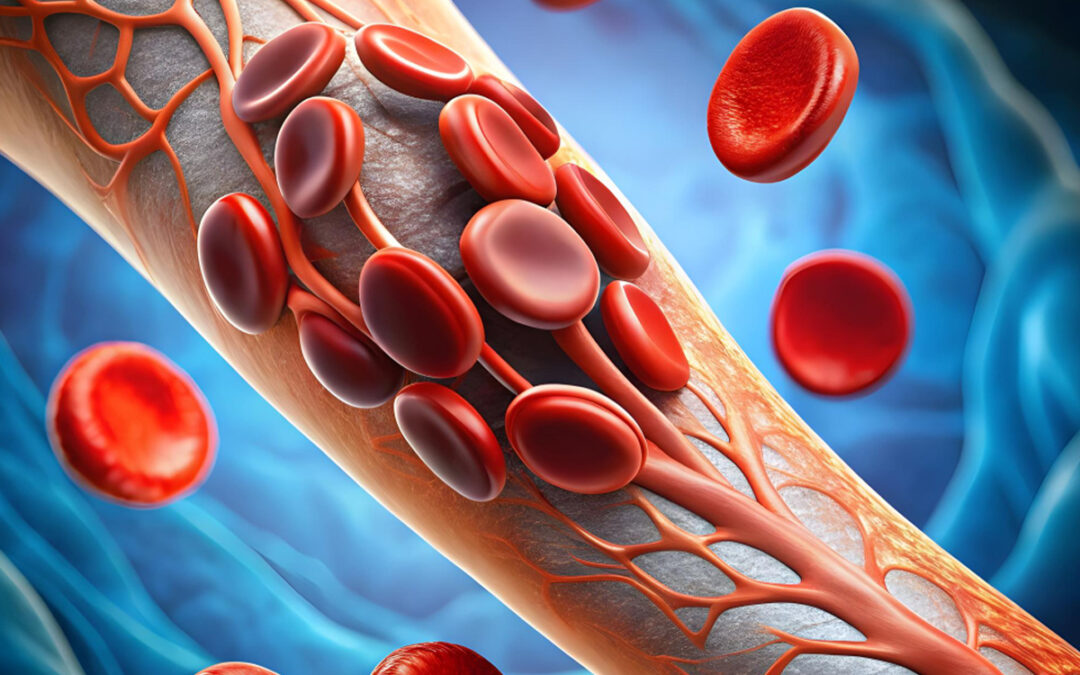Share this blog post with your friends
Thrombosis is a medical condition that has serious consequences, affecting many people across the globe. It occurs when a blood clot forms within a blood vessel, What makes thrombosis particularly alarming is its often-silent nature, many individuals remain unaware they have it until severe symptoms appear. Risk factors like prolonged immobility, certain medications, and medical conditions can significantly increase the likelihood of developing these dangerous clots. However, thrombosis can be prevented and cured, This article aims to provide a thorough understanding of what thrombosis is, its symptoms, its causes, and how to prevent it, allowing you to stay educated and take steps to safeguard your health.
What is Thrombosis?
Thrombosis happens when a blood clot, known as a thrombus, forms in a blood vessel. This clot can block the flow of blood through the vessel, leading to complications depending on where it forms. Blood clots are your body’s natural response to injury, but when they form unnecessarily inside blood vessels, they can cause serious problems.
Types of Thrombosis
There are two main types of thrombosis, each affecting different parts of the body:
- Arterial Thrombosis: This occurs when a clot forms in an artery, the blood vessels that carry oxygen-rich blood away from the heart to the rest of the body. Arterial thrombosis can lead to life-threatening conditions like heart attacks or strokes.
- Venous Thrombosis: This type occurs in the veins, the blood vessels that carry blood back to the heart. A common form of venous thrombosis is deep vein thrombosis (DVT), where a clot forms in the deep veins, usually in the legs.
Symptoms Of Thrombosis
Recognizing the symptoms of thrombosis early can be crucial in getting timely treatment. The symptoms differ depending on whether the clot is in an artery or a vein.
Symptoms of Arterial Thrombosis
Arterial thrombosis can cause severe symptoms because it restricts blood flow to vital organs. Common symptoms include:
- Chest pain or discomfort, which might be a sign of a heart attack.
- Sudden numbness or weakness, particularly on one side of the body, which could indicate a stroke.
- Shortness of breath and difficulty speaking or seeing.
Symptoms of Venous Thrombosis
Venous thrombosis often develops slowly, and its symptoms can vary depending on the location of the clot. Symptoms may include:
- Swelling in the affected limb, often in the leg.
- Pain or tenderness in the leg, especially when standing or walking.
- Warmth and redness over the area of the clot.
Causes and Risk Factors Of Thrombosis
Understanding what causes thrombosis and the factors that increase your risk can help you take preventive measures.
Causes of Thrombosis
Thrombosis can be caused by anything that prevents your blood from circulating or clotting normally. Some common causes include:
- Injury to a blood vessel can trigger clot formation.
- Certain medical conditions, like atrial fibrillation or varicose veins, can make blood more likely to clot.
- Prolonged inactivity, such as long flights or bed rest, can slow blood flow and increase the risk of clots forming.
Risk Factors
Several factors can increase your risk of developing thrombosis:
- Age: The risk of thrombosis increases as you get older.
- Obesity: Being overweight can put extra pressure on your veins, especially in the legs.
- Smoking: Smoking damages blood vessels and makes blood more prone to clotting.
- Pregnancy: The increased pressure on veins and changes in blood flow during pregnancy can raise the risk.
- Family history: If your family has a history of blood clots, your risk is higher.
Diagnosis Of Thrombosis
If you suspect you have thrombosis, it’s important to seek medical attention promptly. There are several methods doctors use to diagnose this condition.
Diagnostic Methods
- Ultrasound: This is the most common test for diagnosing DVT. It uses sound waves to create an image of your veins and detect clots.
- Blood tests: These can measure a substance called D-dimer, which is often elevated when there’s significant clot formation.
- CT or MRI scans: These imaging tests can help locate clots in various parts of the body, especially in the chest or abdomen.

